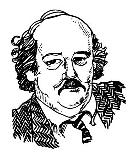(Syndicated to Kansas newspapers Dec. 5, 2016)
 We all read the bad news about forecasts of dropping state revenues in the upcoming fiscal year, presuming that the governor and Legislature can cut their way out of the current fiscal year with a constitutionally required minimum of $1 in the bank on June 30.
We all read the bad news about forecasts of dropping state revenues in the upcoming fiscal year, presuming that the governor and Legislature can cut their way out of the current fiscal year with a constitutionally required minimum of $1 in the bank on June 30.
It will mean scurrying around to cut spending for the next six or so months, which won’t be pretty, especially for the nearly one-third of the 165 lawmakers who are new to the job.
But the scariest part of the so-far most detailed forecast of state revenues is coming up in the year that starts July 1, according to the just-released Consensus Revenue Estimate “long memo.” That long memo explains why Kansas is expected to receive less tax money and it paints a bleak picture for state revenues.
The very simple formula is that the more money we all make, the more money the state can levy taxes against. Yes, we can gripe about taxes, but since the state just takes a portion of what we make, we’ll pay more taxes but still have more money in our wallets.
The problem is that we’re apparently going to have less to tax, which means wallets will be thinner for men who will avoid that bump that makes our hips look fat, and for women generally lighter purses to carry.
For the governor and legislators who don’t have a good mechanism for fast cash by raising taxes, it means that the state will receive about $350 million less for the rest of this fiscal year, and $433 million or 7.4 percent less in tax revenue for the following year starting July 1.
And, a tax fix for that continuing shortfall is tricky to accomplish, because unless there’s something novel coming out of the governor’s office or from the minds of legislators, that $433 million hole is going to be difficult to fill in the same year that it occurs.
You want a retroactive tax increase? New taxes on money you’ve already spent? Didn’t think so, which means that chances are good that any new tax-raising idea that lawmakers come up with won’t be in effect until Jan. 1, 2018—more than a year from now.
So, with the immediate effect of any tax increase delayed at least a year, look for a couple things to happen.
Easiest way for the state to pull money into its budget is to cut what is going out. Again, it is looking like the easiest bill not to pay is the dedication of a portion of the state sales tax to the Department of Transportation. Last session, the governor pulled back several hundred million dollars that were pledged from the highway program. Expect that to happen again, to the angst of contractors, the people who actually lay down that asphalt for a living, and the Kansans whose coffee slops onto their pants as they hit potholes.
Oh, and don’t forget that the money pulled back from KDOT means less for little maintenance projects and upkeep on those bridges that take school buses full of children to and from school each day.
That KDOT money is the easy one, if legislators don’t live next to highway contractors or their employees, but it gets more difficult after that.
Then it’s down to other cuts that apply differently to different portions of the state’s citizens. State-assisted health care for the poor and their children will be felt in some neighborhoods more than others, care for the elderly who can’t take care of themselves at home will hit some families harder than others, and even law enforcement/the judiciary and imprisonment of those dangerous to Kansans also are likely to be squeezed.
That forward look into the future of Kansas revenues and the services and protections that those revenues provide is going to be scary at times. Or, is going to take some elaborate explanation…
